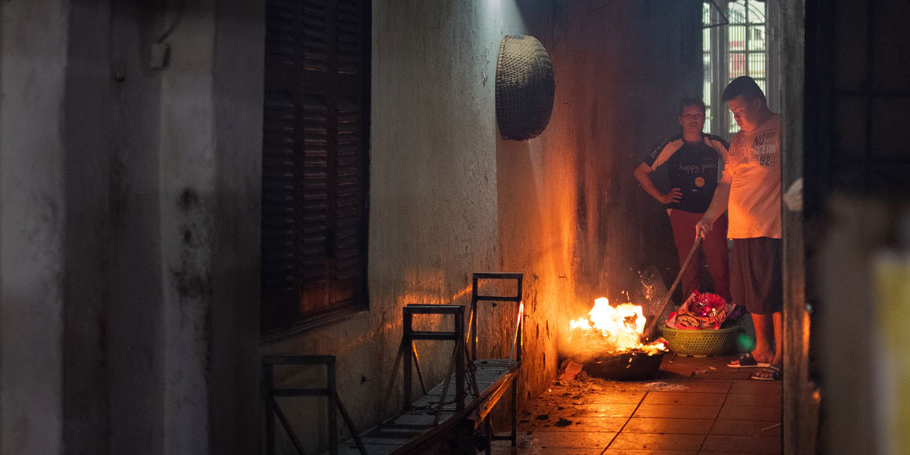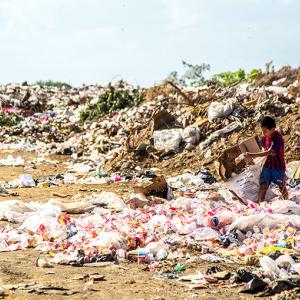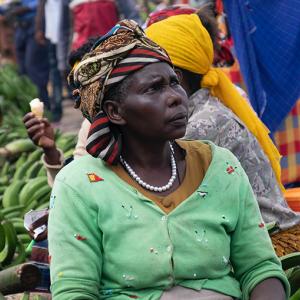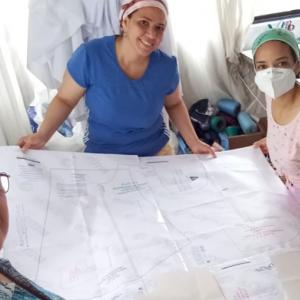What is the problem?
Open burning of waste is a widespread practice in Ukraine, with deep roots in culture, the agricultural economy and household habits. Official reports estimate that between 36,000-56,000 fires occur each year with devastating impacts on local air quality and the natural balance of ecosystems. Burning waste also leads to economic losses which can amount to millions of US dollars. Despite the scale of the problem, the government lacks granular regional data about open burning or insight into the popularity of sustainable waste management practices, such as composting.
What did the Accelerator Lab and partners do
To better understand patterns of waste management practices across the country, the Lab set out to create an up-to-date map of open burning and composting in rural communities using a combination of open satellite data with GIS and crowdsourcing. By engaging with grassroots groups at all stages of design and implementation, they hoped to inspire regional groups to take action against open burning in their communities. Working with the Center for Innovations Development, the team created a prototype dashboard that visualized the data. The dashboard was shared with community groups over a series of ten online meetings due to COVID-19 restrictions. The sessions were attended by more than 200 members of grassroots groups, as well as policy makers from local authorities, with approximately 20 groups taking part regularly. Some meetings focused on interpreting GIS data and using open source tools, while others examined the health impacts of open burning and air pollution through group deliberation. The team facilitated open discussions through chat and video features, as well as using collaborative workspaces for attendees to document their understanding of the issue and suggest solutions to specific problems.

What was the benefit of using collective intelligence for this issue?
During the community meetings, the regional groups developed the skills to analyze open source data and use GIS themselves. The GIS dataset provided a starting point for the participants to develop a shared understanding of open burning, which catalyzed practical discussions about what could be done. This has enabled them to start taking action locally, tailoring their plans to specific burning activity in their regions. For example, the community of Zasulska identified that the majority of local fires occurred in corn fields, while in Torchynska the data helped residents to link open burning to agricultural and grass fields. The Lab also crowdsourced the location of 367 previously unknown composting sites, many of them maintained by individual households or small groups. These were integrated into the data dashboard to help local activists assess their feasibility as an alternative to open burning. While incomplete, this data provides a starting point for scaling citizen-led composting practices that are otherwise excluded from official statistics.
What next?
The Ukraine Ministry of Environmental Protection and Natural Resources Ministry of Environment has expressed an interest in using the open burning dashboard to inform its future programs on air quality and disaster risk management. The team are currently working with the government to identify funding that would allow them to scale up and integrate the prototype into official monitoring infrastructures.
What does this experience tell us about collective intelligence design?
The team openly explored novel datasets together with participants. Doing so, allowed them to build trust on a sensitive issue, while developing shared goals and a collective understanding. This was notably lacking when it came to official data sources, which the community groups regarded with suspicion. The team also noticed that by moving the meetings online in response to COVID-19 restrictions they substantially increased diversity by bringing in people from different sectors (civil society, and local and national authorities and businesses) and different parts of the country. Both written and video contributions were more diverse, a key design principle for collective intelligence, which helped the Lab to facilitate more informed and wide-ranging discussions.













